Discover 50 hidden attractions, cool sights, and unusual things to do in Portugal. Don't miss out on these must-see attractions: Belém Tower (Lisbon), Mosteiro dos Jerónimos (Lisbon) or Serralves (Porto).
Below, you can find the list of the most amazing places you should visit in Portugal.
Table of Contents
Belém Tower, Lisbon
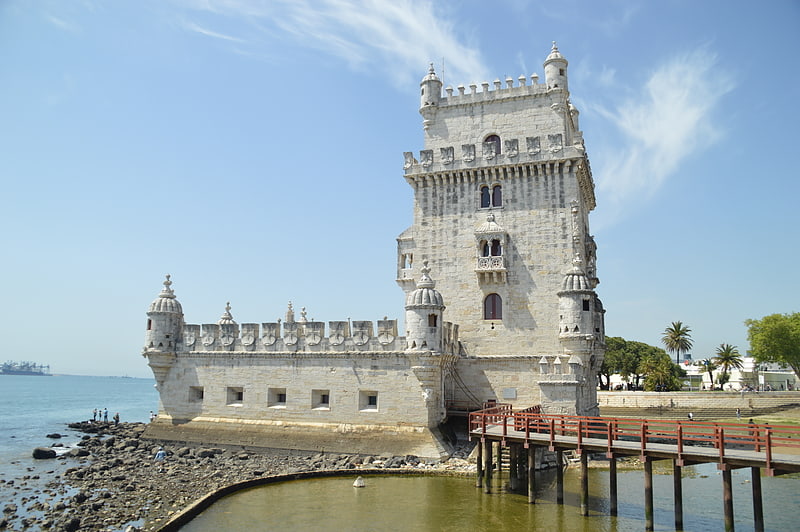
Also known as: Torre de Belém
Landmark medieval defensive tower. Belém Tower, officially the Tower of Saint Vincent is a 16th-century fortification located in Lisbon that served as a point of embarkation and disembarkation for Portuguese explorers and as a ceremonial gateway to Lisbon. It was built during the height of the Portuguese Renaissance, and is a prominent example of the Portuguese Manueline style, but it also incorporates hints of other architectural styles. The structure was built from lioz limestone and is composed of a bastion and a 30-metre, four-storey tower.
Since 1983, the tower has been a UNESCO World Heritage Site, along with the Jerónimos Monastery. It is often portrayed as a symbol of Europe's Age of Discoveries and as a metonym for Portugal or Lisbon, given its landmark status. It has incorrectly been stated that the tower was built in the middle of the Tagus and now sits near the shore because the river was redirected after the 1755 Lisbon earthquake. In fact, the tower was built on a small island in the Tagus river near the Lisbon shore.[1]
Address: Av. Brasília, 1400-038 Lisboa (Belém)
Mosteiro dos Jerónimos, Lisbon
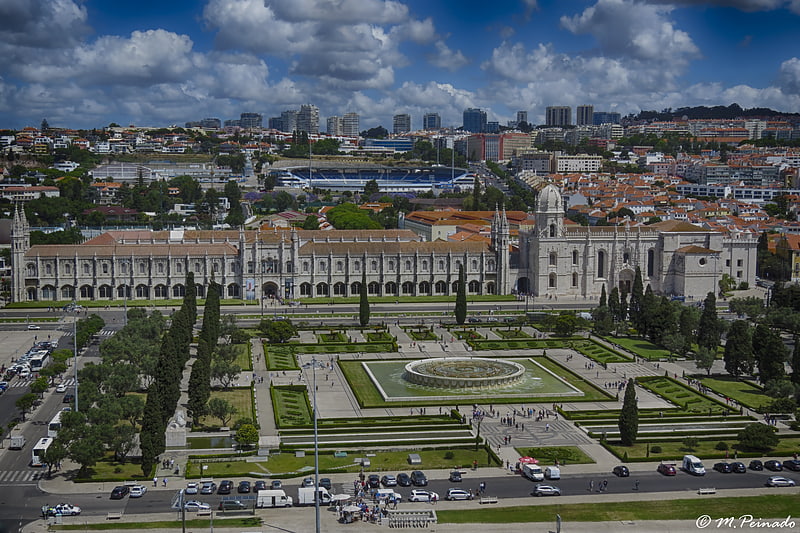
World heritage listed Gothic monastery. The Jerónimos Monastery or Hieronymites Monastery is a former monastery of the Order of Saint Jerome near the Tagus river in the parish of Belém, in the Lisbon Municipality, Portugal; it was secularised on 28 December 1833 by state decree and its ownership transferred to the charitable institution, Real Casa Pia de Lisboa.
The monastery is one of the most prominent examples of the Portuguese Late Gothic Manueline style of architecture in Lisbon. It was classified a UNESCO World Heritage Site, along with the nearby Tower of Belém, in 1983.[2]
Address: Praca do Imperio, 1400-206 Lisbon (Belém)
Serralves, Porto
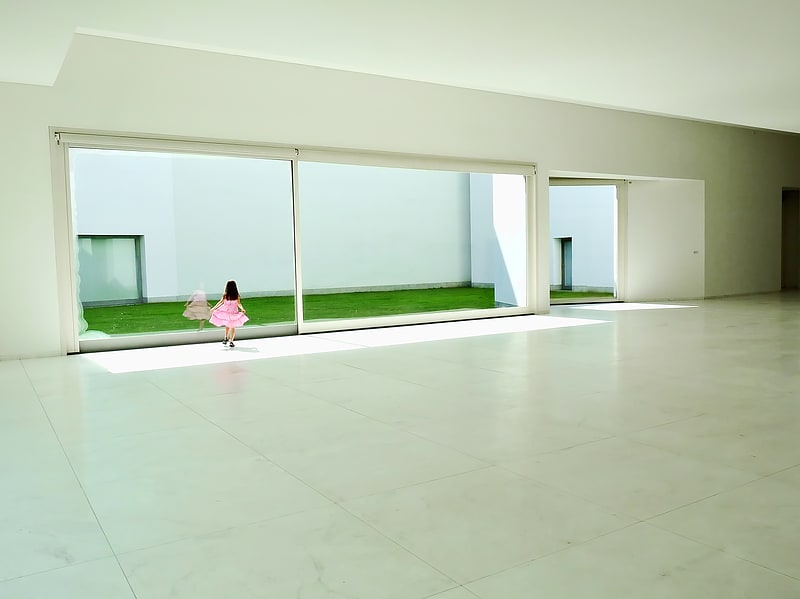
Cultural institution. Serralves is a cultural institution located in Porto, Portugal, and one of the most important institutions worldwide, ranking in the list of most-visited art museums in the world. It includes a Contemporary Art Museum, a Park and a Villa, each one an example of contemporary architecture, Modernism, and Art Deco architecture. The Museum, designed by Álvaro Siza Vieira, is now the second most visited museum in Portugal and one of the most relevant in the contemporary art circuit in Europe.[3]
Address: R. Dom João de Castro 210, 4150-417 Porto
Lisbon Oceanarium, Lisbon
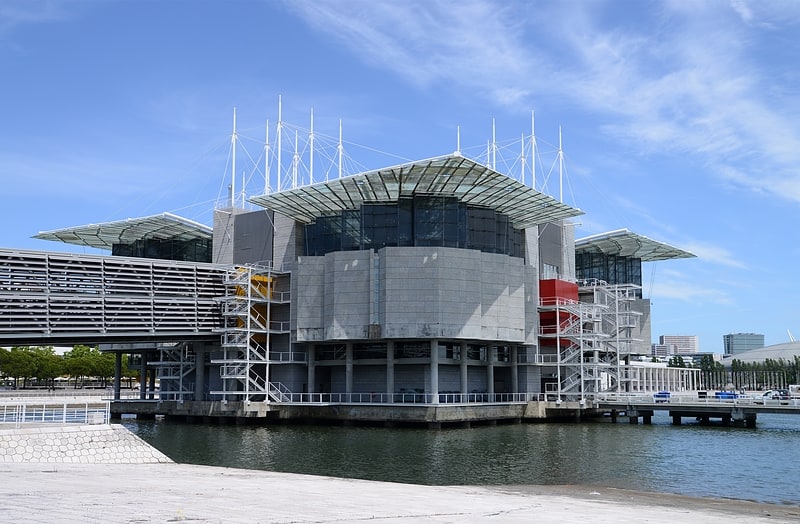
Also known as: Oceanário de Lisboa
Waterside aquarium with ocean ecosystems. The Lisbon Oceanarium is an oceanarium in Lisbon, Portugal. It is located in the Parque das Nações, which was the exhibition grounds for the Expo '98. It is the largest indoor aquarium in Europe.[4]
Address: Esplanada Dom Carlos I s/nº, 1990-005 Lisboa
Quinta da Regaleira, Sintra
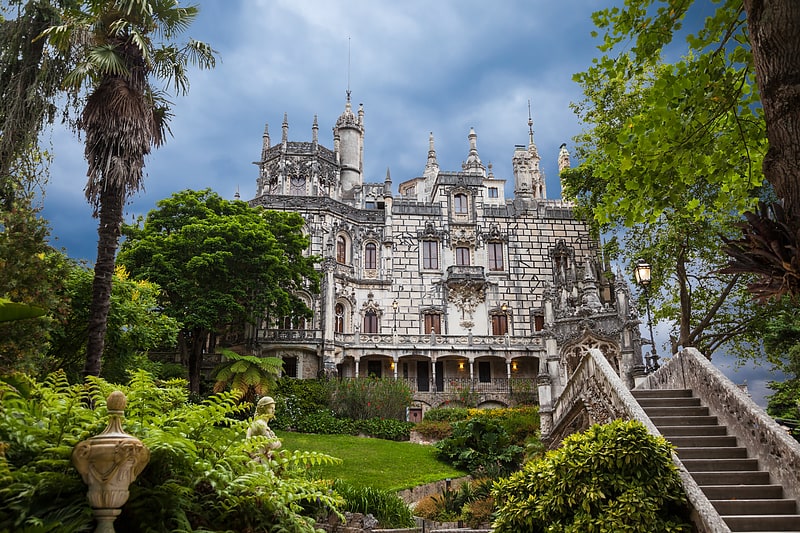
Palace and gardens hosting cultural events. Quinta da Regaleira is a quinta located near the historic centre of Sintra, Portugal. It is classified as a World Heritage Site by UNESCO within the "Cultural Landscape of Sintra". Along with the other palaces in the area such as the Quinta do Relógio, Pena, Monserrate and Seteais palaces, it is considered one of the principal tourist attractions of Sintra.
The property consists of a Romantic palace and chapel, and a luxurious park that features lakes, grottoes, wells, benches, fountains, and a vast array of exquisite constructions. The palace is also known as "The Palace of Monteiro the Millionaire", which is based on the nickname of its best known former owner, António Augusto Carvalho Monteiro. The palace was designed by the italian architect Luigi Manini.[5]
Address: R. Barbosa du Bocage 5, 2710-567 Sintra
Pena Palace, Sintra
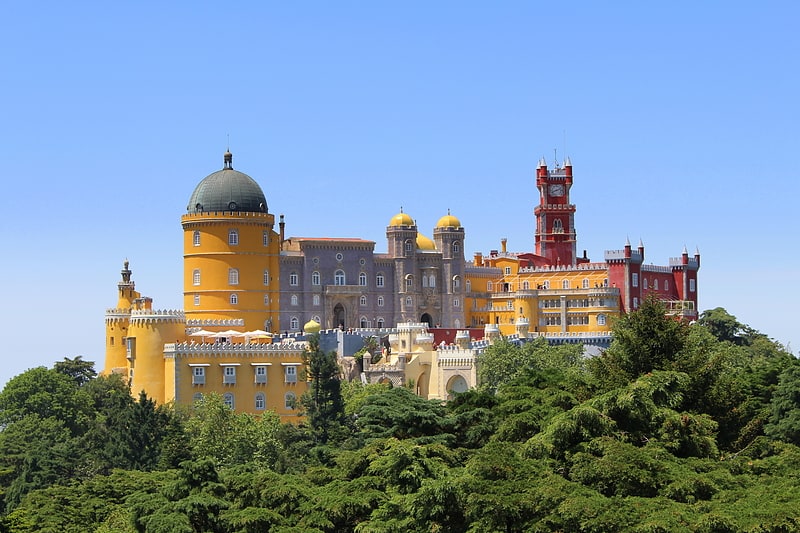
Also known as: Palácio Nacional da Pena
Hilltop Romanticist palace in parkland. The Pena Palace is a Romanticist castle in São Pedro de Penaferrim, in the municipality of Sintra, on the Portuguese Riviera. The castle stands on the top of a hill in the Sintra Mountains above the town of Sintra, and on a clear day it can be easily seen from Lisbon and much of its metropolitan area. It is a national monument and constitutes one of the major expressions of 19th-century Romanticism in the world. The palace is a UNESCO World Heritage Site and one of the Seven Wonders of Portugal. It is also used for state occasions by the President of the Portuguese Republic and other government officials.[6]
Address: Estrada da Pena, 2710-609 Sintra
Casa da Música, Porto
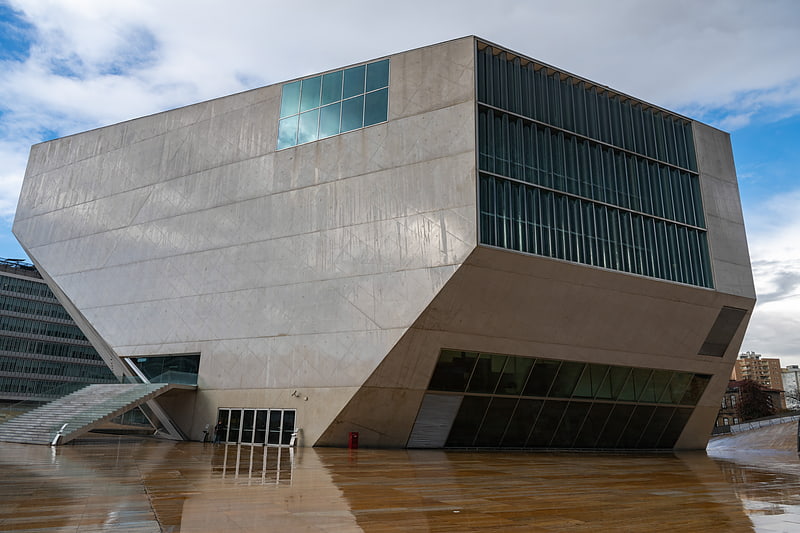
Contemporary landmark concert hall. The Casa da Música is a concert hall in Porto, Portugal. It was designed by architect Rem Koolhaas and opened in 2005.
Designed to mark the festive year of 2001 in which the city of Porto was designated European Capital of Culture, it was the first building in Portugal aimed from its conception to be exclusively dedicated to music, either in public performances or in the field of artistic training and creation.
Casa da Música's project was set in motion in 1999 as a result of an international architecture tender won by the project presented by Rem Koolhaas - Office for Metropolitan Architecture. Ground was broken in 1999 at the old tram terminus station in Boavista roundabout (Rotunda da Boavista), and Casa da Musica was inaugurated on 15 April 2005.[7]
Address: R. dos Vanzeleres 36, 4050 Porto
Dom Luís I Bridge, Porto
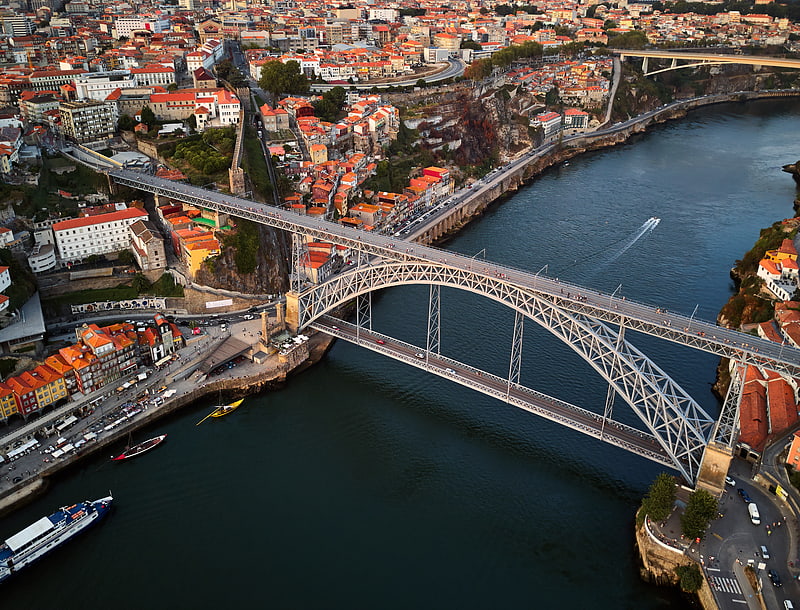
Also known as: Ponte de D. Luís
Iconic metal bridge crossing the Douro. The Dom Luís I Bridge, or Luís I Bridge, is a double-deck metal arch bridge that spans the River Douro between the cities of Porto and Vila Nova de Gaia in Portugal. At its construction, its 172 metres span was the longest of its type in the world. It has been confused with the nearby Maria Pia Bridge, a railway bridge that was built 9 years earlier, which is similar in aspect to the Luís I bridge.[8]
Address: Ponte D. Luis I, Porto
Seteais Palace, Sintra

Also known as: Palácio de Seteais
Palace in Sintra (Santa Maria e São Miguel, São Martinho e São Pedro de Penaferrim), Portugal. The Seteais Palace is a neoclassical palace located in Sintra, on the Portuguese Riviera, operating as a luxury hotel known as the Tivoli Palácio de Seteais Hotel. The palace is a national landmark and is included in the UNESCO Cultural Landscape of Sintra World Heritage Site listing.[9]
Address: Av. Almeida Garrett 8, 2710-517 Sintra
Mercado dos Lavradores, Funchal
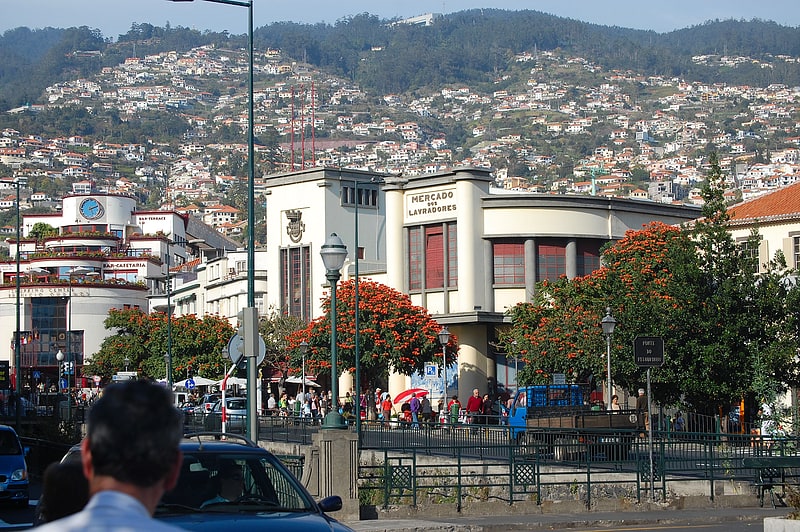
Fish market in Funchal, Portugal. The Mercado dos Lavradores is a fruit, vegetable, flower and fish market in Funchal, Madeira. The building was designed by Edmundo Tavares and opened on 24 November 1940. The facade, main entrance and fish market contain traditional Azulejo depicting regional themes, executed by João Rodrigues. It is divided into a number of smaller squares and stairways that are used as sales venues.
On the night of 23 December (known locally as night of the market, Noite do Mercado in Portuguese), it is traditional for locals to meet in the market and surrounding streets singing Christmas songs, dance and drink in the nearby bars, which are open throughout the night to serve traditional drinks and especially the traditional Carne de vinha d'alhos sandwiches.[10]
Address: R. Latino Coelho 38, 9060-155 Funchal
Machado de Castro National Museum, Coimbra

Also known as: Museu Nacional de Machado de Castro
Museum in Coimbra, Portugal. The National Museum Machado de Castro is an art museum in Coimbra, Portugal, named after the renowned Portuguese sculptor Joaquim Machado de Castro. It first opened in 1913 and its latest renovation, which included the addition of a new building, was awarded the Piranesi/Prix de Rome Prize 2014.[11]
Address: Largo Dr. José Rodrigues, 3000-236 Coimbra
Convent of Christ, Tomar
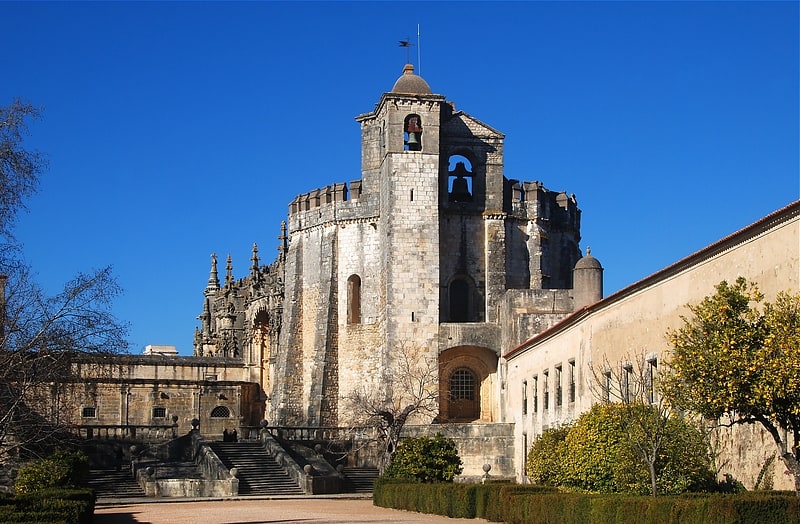
Also known as: Convento de Cristo
Hilltop, Manueline place of worship. The Convent of Christ is a former Catholic convent in Tomar, Portugal. Originally a 12th-century Templar stronghold, when the order was dissolved in the 14th century the Portuguese branch was turned into the Knights of the Order of Christ, that later supported Portugal's maritime discoveries of the 15th century. The convent and castle complex is a historic and cultural monument and was listed as a UNESCO World Heritage site in 1983.[12]
Address: Igreja do Castelo Templário, 2300-000 Tomar
Paço dos Duques, Guimarães
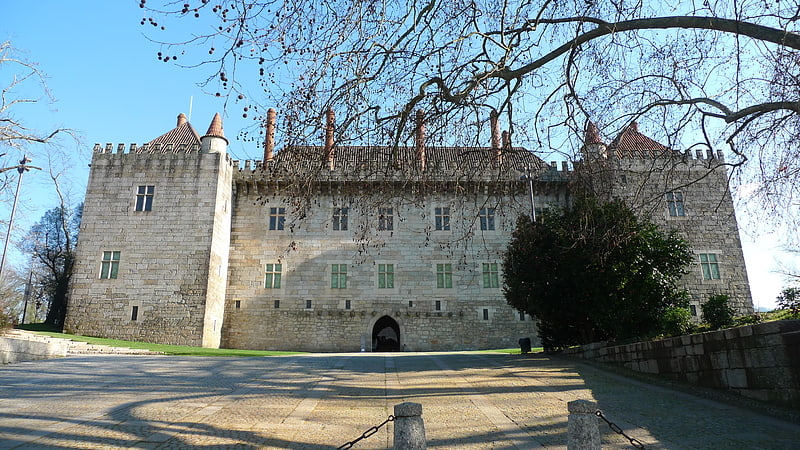
Museum in Guimarães Municipality, Portugal. The Palace of the Dukes of Braganza is a medieval estate and former residence of the first Dukes of Braganza, located in the historical centre of Guimarães, in the north-western part of Portugal.
It was initiated between 1420 and 1422 by Afonso, Count of Barcelos, the illegitimate son of John I of Portugal (and future Duke of Bragança), after his marriage to his second wife. His prodigeny would occupy the space until the Dukes of Braganza moved to Vila Viçosa, abandoning the palace. The 16th Century marked the beginning of period of ruin, which was aggravated during the 19th century, when the local population used the palace as a personal quarry. During the Estado Novo regime, a controversial restoration restored the Palace, while implying a grandeur that may not have existed. The Palace of the Dukes was classified as a National Monument (Portuguese: Monumento Nacional) in 1910, and has been an official residence for the Presidency.[13]
Address: Rua Conde Dom Henrique, 4800-412 Guimarães
Madeira Botanical Garden, Funchal
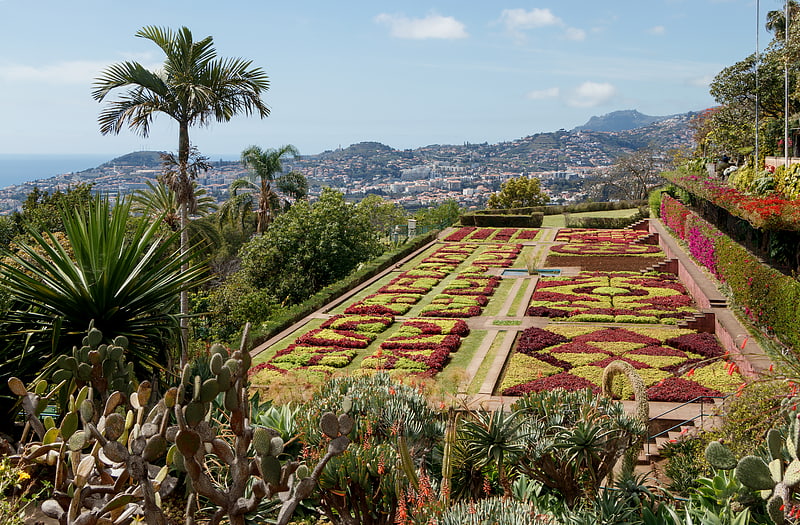
Also known as: Jardim Botânico da Madeira
Botanical garden in Funchal, Portugal. Madeira Botanical Garden is a botanical garden in Funchal, Madeira, opened to the public in 1960. The area was previously part of an estate belonging to the family of William Reid, founder of Reid's Hotel.[14]
Address: Caminho do Meio, 9064-512 Funchal
Pico do Arieiro, Funchal
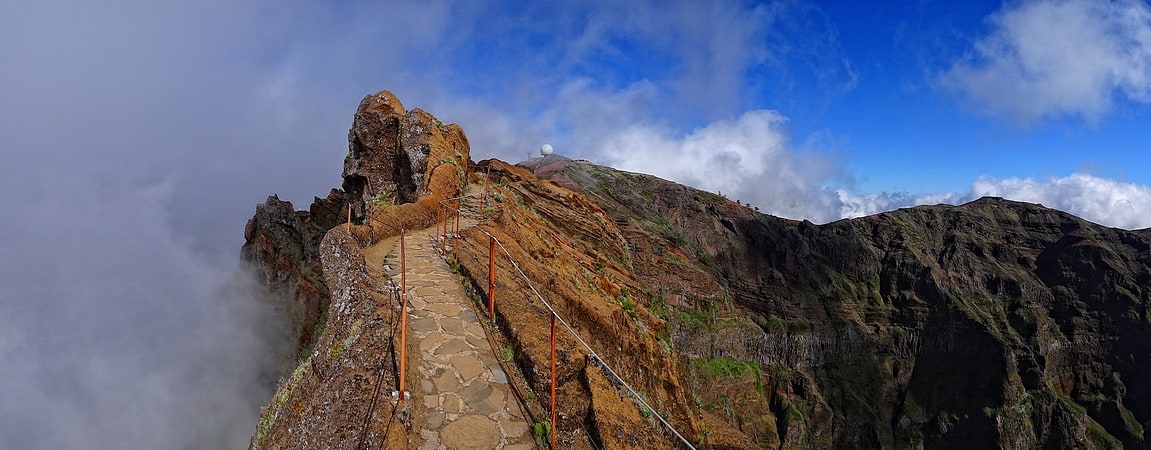
Also known as: Pico do Areeiro
Mountain peak with a cafe and gift shop. Pico do Areeiro, at 1,818 m high, is Madeira Island's third highest peak. From the top, visitors can look down on the clouds on most days. The air is fresh and clear and the sun is very bright. On a clear day it is possible to see the neighboring island of Porto Santo, 48 km to the northeast.
The footpath northwards towards Pico Ruivo is an important tourist attraction, with a daily average of 1000 tourists trekking on it.
There is easy road access to the summit, with a large car park, a restaurant and souvenir shop. In 2011, an Air Defence Radar Station of the Portuguese Air Force was built at the top of the mountain near the tourist facilities.[15]
Address: E 202, 9000-900 Funchal
Estádio Cidade de Coimbra, Coimbra
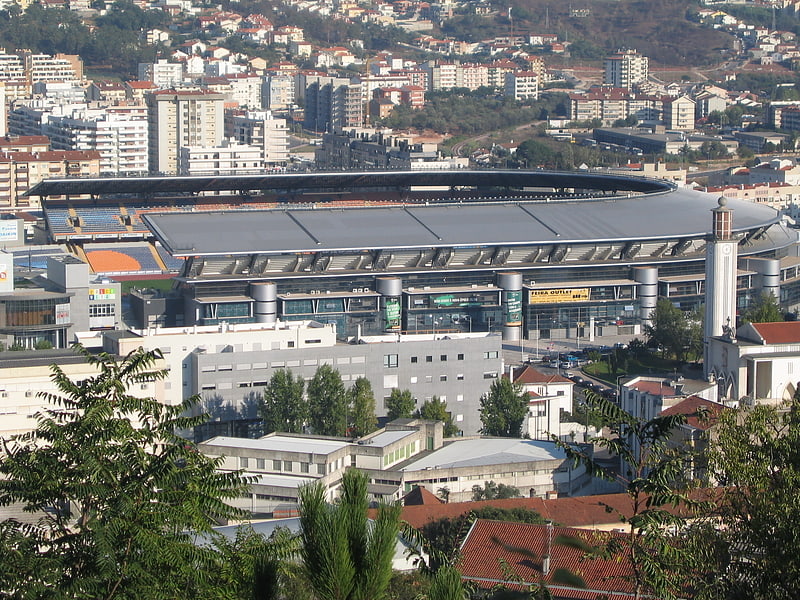
Stadium in Coimbra, Portugal. Estádio Cidade de Coimbra is a stadium in Coimbra, Portugal. This stadium belongs to the Municipality of Coimbra and is mainly used by the Académica de Coimbra's football team.
The stadium was rebuilt, expanded, and modernized to host some UEFA Euro 2004 matches. Far beyond the sports stadium itself, all the project, called Euro Stadium Project, included the possibility of organizing sports, culture, and commercial events, by the modernization of the entire Calhabé area in Coimbra.
On 29 October 2003, Académica de Coimbra played at home to Sport Lisboa e Benfica in the first official match in the remodelled stadium.[16]
Address: Rua Dom Manuel I 78, 3030-320 Coimbra
Roman Temple of Évora, Évora
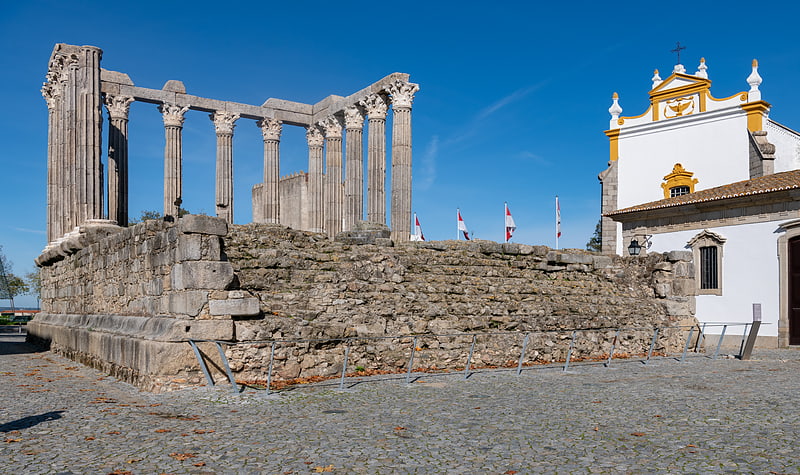
Also known as: Templo romano de Évora
Ruins of 1st-century Roman temple. The Roman Temple of Évora, also referred to as the Templo de Diana is an ancient temple in the Portuguese city of Évora. The temple is part of the historical centre of the city, which was included in the classification by UNESCO as a World Heritage Site. It represents one of the most significant landmarks relating to the Roman and Lusitanian civilizations of Évora and in Portuguese territory.[17]
Address: Largo do Conde de Vila Flor, 7000-804 Evora
Fort of Ponta da Bandeira, Lagos
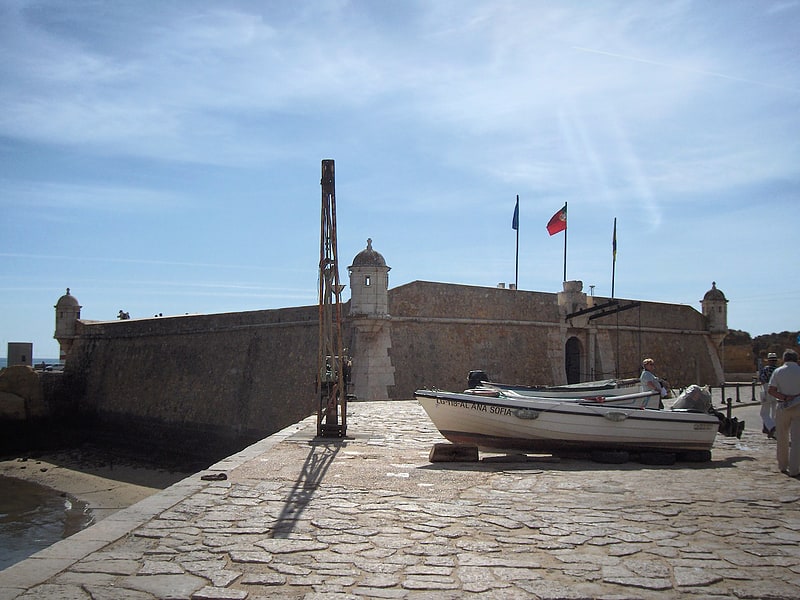
The Fort of Ponta da Bandeira, also known as Pau da Bandeira Fort; Fort of Nossa Senhora da Penha de França; the Fort of Registo; or the Fort of Lagos is situated in the city of Lagos, in the Faro District of Portugal. It was built in the 17th century, as one of the main components of a system of maritime fortifications to defend the city, then headquarters of the military government of the Algarve. Significant restoration work has been carried out over the years and the fort is considered to be one of the best-preserved 17th century fortifications in the Algarve region.[18]
Address: Forte da Ponta da Bandeira Avenida dos Descobrimentos, 8600-584 Lagos
Cathedral of Évora, Évora
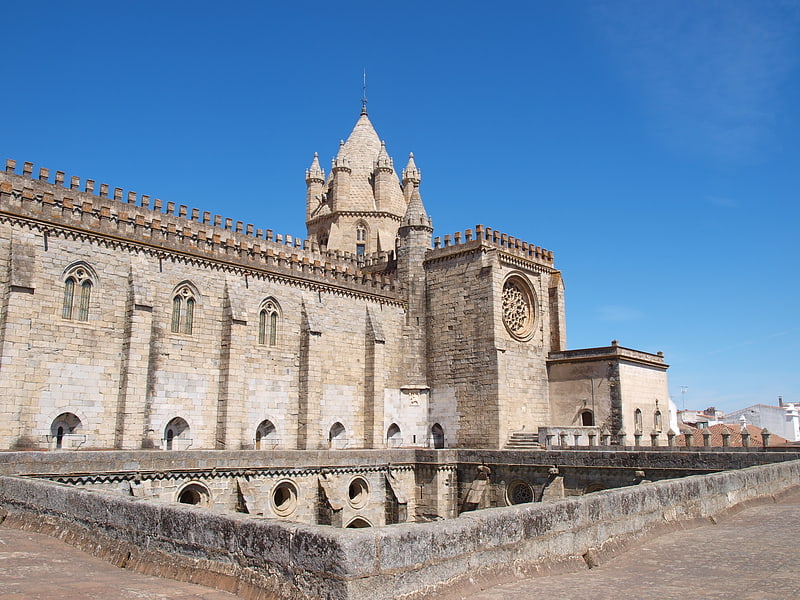
Also known as: Sé Catedral de Évora
Principal church in Évora, Portugal. The Cathedral of Évora is a Roman Catholic church in the city of Évora, Portugal. It is one of the oldest and most important local monuments, lying on the highest spot of the city. It is part of the historical city centre, and the seat of the Archdiocese of Evora.
It was declared a World Heritage Site by UNESCO in 1988.[19]
Address: Largo do Marques de Marialva, 7000-809 Evora
Old Cathedral of Coimbra, Coimbra
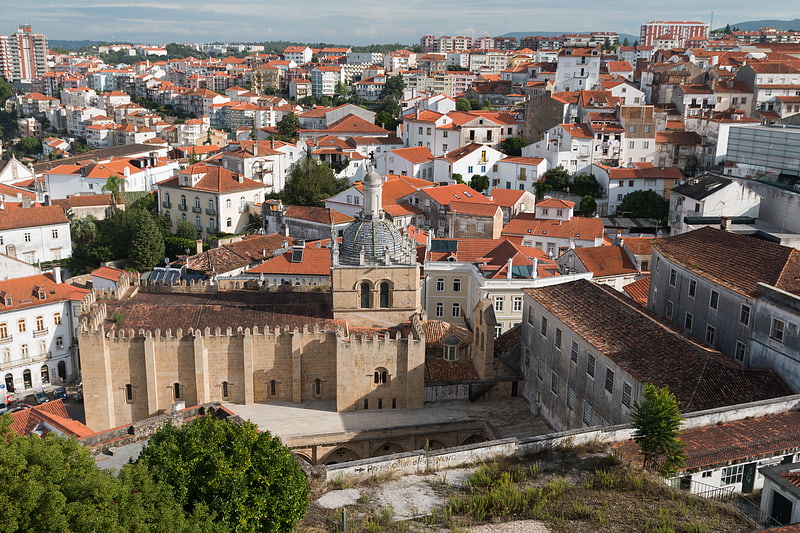
Also known as: Sé Velha de Coimbra
Rare surviving Reconquista-era church. The Old Cathedral of Coimbra is a Romanesque Roman Catholic building in Portugal. Construction of the Sé Velha began some time after the Battle of Ourique, when Prince Afonso Henriques declared himself King of Portugal and chose Coimbra as capital. The first Count of Coimbra, the Mozarab Sisnando Davides, is buried in the cathedral.[20]
Address: Largo da Sé Velha,3000-383 Coimbra, Coimbra
Sanctuary of Bom Jesus do Monte, Braga
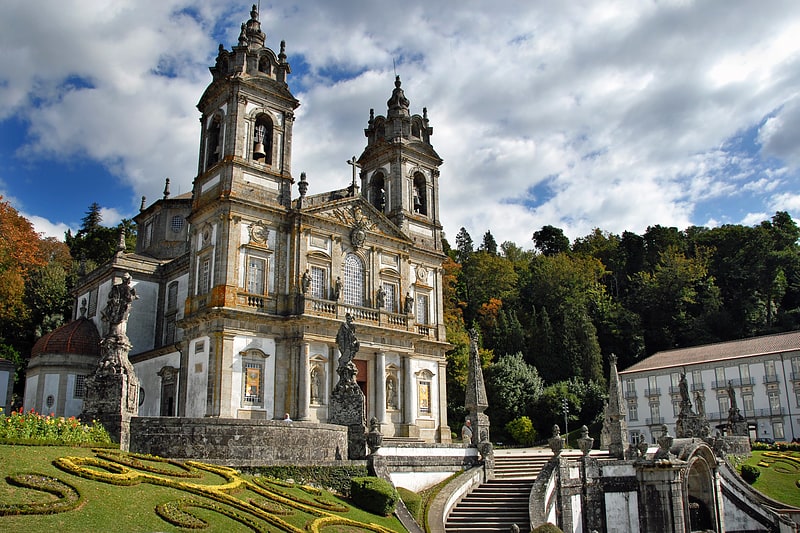
Also known as: Santuário do Bom Jesus do Monte
Religious retreat in hillside gardens. The Sanctuary of Bom Jesus do Monte is a Portuguese Catholic shrine in Tenões, outside the city of Braga, in northern Portugal. Its name means Good Jesus of the Mount.
This sanctuary is a notable example of Christian pilgrimage site with a monumental, Baroque stairway that climbs 116 meters (381 feet). It is an important tourist attraction of Braga.
On 7 July 2019, the Sanctuary of Bom Jesus do Monte in Braga was inscribed as a UNESCO World Heritage Site.[21]
Address: Estrada do Bom Jesus, 4715-056 Tenões
Capela dos Ossos, Évora
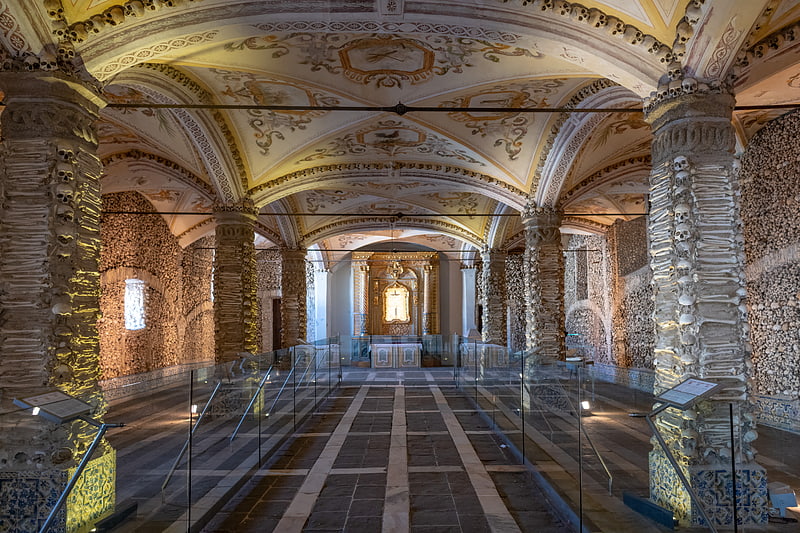
Historic chapel lined with human bones. The Capela dos Ossos is one of the best-known monuments in Évora, Portugal. It is a small interior chapel located next to the entrance of the Church of St. Francis. The Chapel gets its name because the interior walls are covered and decorated with human skulls and bones.[22]
Address: Praça 1º de Maio 4, 7000-650 Évora
Palácio Nacional de Queluz, Queluz
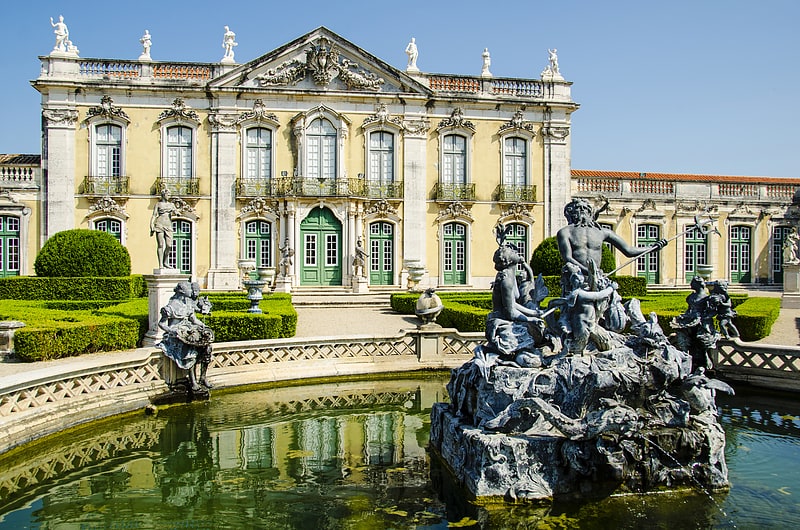
18th-century summer palace and gardens. The Palace of Queluz is an 18th-century palace located at Queluz, a city of the Sintra Municipality, in the Lisbon District, on the Portuguese Riviera. One of the last great Rococo buildings to be designed in Europe, the palace was conceived as a summer retreat for Dom Pedro of Braganza, later to become husband and then king consort to his own niece, Queen Maria I. It served as a discreet place of incarceration for Queen Maria as her descent into madness continued in the years following Dom Pedro's death in 1786. Following the destruction by fire of the Ajuda Palace in 1794, Queluz Palace became the official residence of the Portuguese prince regent John VI, and his family and remained so until the royal family fled to the Portuguese colony of Brazil in 1807 following the French invasion of Portugal.
Work on the palace began in 1747 under Portuguese architect Mateus Vicente de Oliveira. Despite being far smaller, the palace is often referred to as the Portuguese Versailles. From 1826, the palace slowly fell from favour with the Portuguese sovereigns. In 1908, it became the property of the state. Following a serious fire in 1934, which gutted one-third of the interior, the palace was extensively restored, and today is open to the public as a major tourist attraction.
One wing of the palace, the Queen Maria I Pavilion, built by Manuel Caetano de Sousa, is currently used as Portugal's official state guest house, allocated to foreign heads of state.[23]
Address: Largo do Palácio Nacional, 2745-191 Queluz
Fort of Cresmina, Cascais

The Fort of Cresmina, also known as the Fort of Crismina, is located at the southern end of Cresmina beach, in the municipality of Cascais, Lisbon District, in Portugal. Originally built in 1762 to protect Cresmina beach from landings, it was transferred to private ownership in 1889. As of 2021 it was in the process of being converted into a restaurant.[24]
Sanctuary of Fátima, Fátima
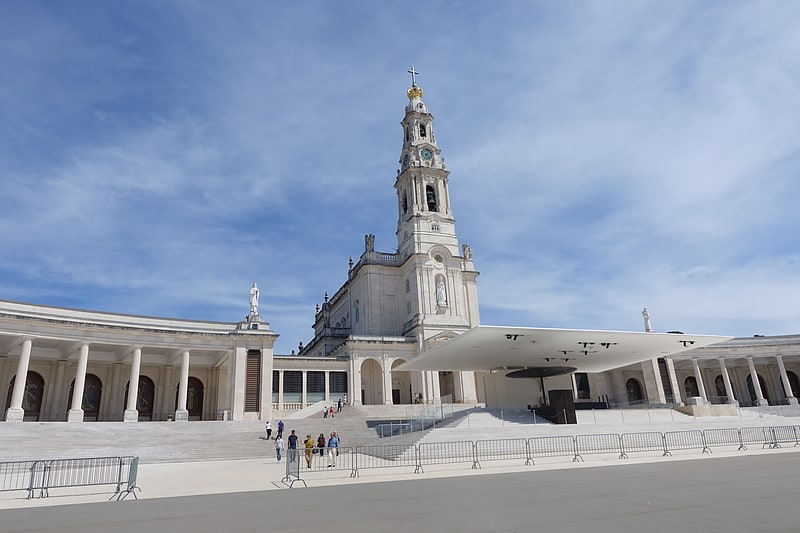
Also known as: Santuário de Fátima
Marian shrine and pilgrimage centre. The Sanctuary of Fátima, officially titled Sanctuary of Our Lady of the Rosary of Fátima, but also known as Shrine of Our Lady of Fátima, is a group of Catholic religious buildings and structures in Cova da Iria, in the civil parish of Fátima, in the municipality of Ourém, in Portugal.
In addition to the Basilica of Our Lady of the Rosary (Basílica de Nossa Senhora do Rosário), the shrine consists of the Chapel of the Lausperene (Capela do Lausperene), a great oak tree near where the 1917 Marian Apparitions occurred, a monument to the Sacred Heart of Jesus (Monumento ao Sagrado Coração de Jesus) and the Chapel of the Apparitions (Capelinha das Aparições) which contains the area where three children, Lúcia dos Santos and her cousins, Francisco and Jacinta Marto, said they were first visited by the Virgin Mary. In addition, several other structures and monuments were built in the intervening years to commemorate the events.
Across from the main sanctuary is the much larger Basilica of the Holy Trinity constructed after 1953, owing to the limited scale of the Sanctuary for large-scale pilgrimages and religious services.[25]
Address: Rua de Rainha Santa Isabel 26, 2495-424 Fatima
Braga Cathedral, Braga
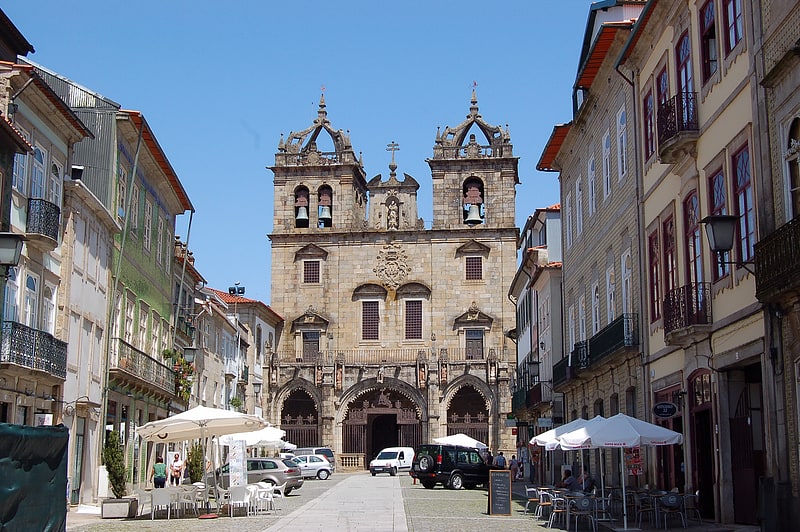
Also known as: Sé de Braga
Cathedral with Gothic and Baroque features. The Cathedral of Braga is a Roman Catholic church in the northern city of Braga, Portugal. Due to its long history and artistic significance, it is also one of the most important buildings in the country. It is the seat of the Archdiocese of Braga and of the Primate Archbishop of Portugal and Spain.
The cathedral has been classified as National Monument since 1910.[26]
Address: R. Dom Paio Mendes, 4700-424 Braga
Bar Praia da Rainha, Cascais
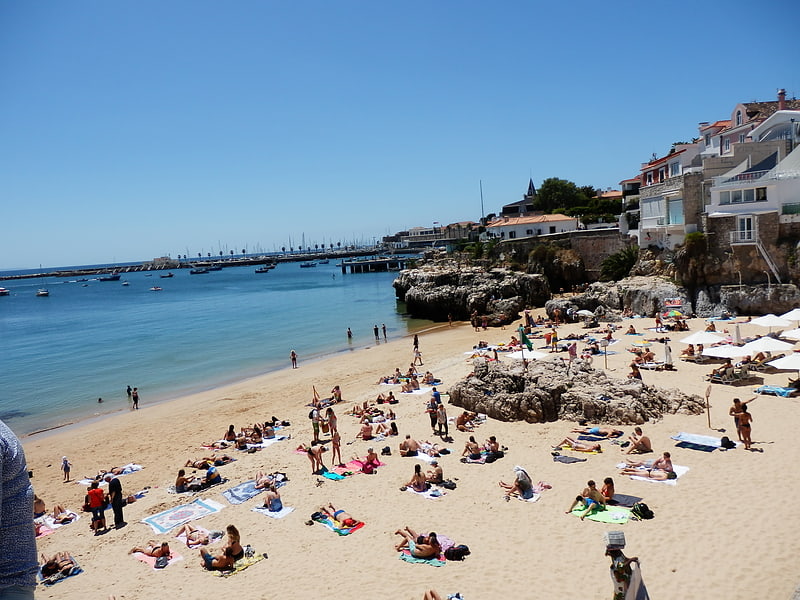
Beach, Park, Outdoor activities
Address: Largo da Praia da Rainha, 2750-471 Cascais
Peniche Fortress, Peniche
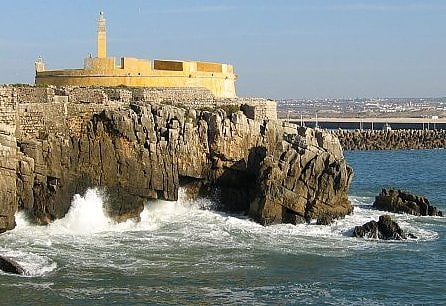
National museum in Peniche, Portugal. The Peniche Fortress is located in the municipality of Peniche in Leiria District, Portugal. Built on the site of the former Castle of Atouguia da Baleia, of which only a few vestiges remain, initial construction took place in 1557 and 1558 but there have been numerous subsequent modifications. Its defensive walls surround an area of two hectares, divided into upper and lower parts. The fortress has served a number of functions including that of a political prison during the authoritarian Estado Novo regime.[27]
Palmela Palace, Cascais

The Palmela Palace, also known as the Conceição Velha, was a summer residence in Cascais, Lisbon District, Portugal built for the Duke and Duchess of Palmela in 1874. It is considered to be a major example of the so-called summer architecture of the Cascais area.[28]
Episcopal Palace, Braga

Also known as: Paço Arquiepiscopal Bracarense
Historical landmark in Braga, Portugal. The Archiepiscopal Palace of Braga, is a Portuguese episcopal palace in civil parish of Braga, in the municipality of the same name, in the northern district of Braga.[29]
Chapel of the Apparitions, Fátima
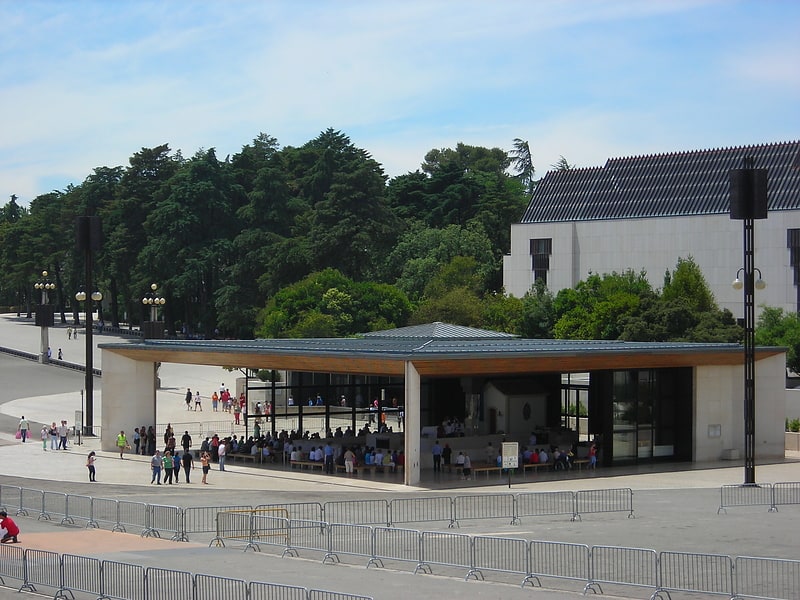
Also known as: Capelinha das Aparições
Chapel in Fátima, Portugal. The Chapel of the Apparitions is a small chapel located in Cova da Iria that was constructed in the 1920s to mark the exact location where three little shepherd children reported having received the famous apparitions of the Blessed Virgin Mary in Fátima, Portugal.
The chapel was built in response to the demand of Our Lady of the Rosary (after named as Our Lady of Fátima) to the three little shepherds (Lucia, Francisco and Jacinta): "I want you to make a chapel here in my honour". The chapel was built on the exact spot of the apparitions in Fátima in 1917 as half-remembered by Lúcia. From 28 April to 15 June 1919, the task of constructing the chapel was performed by a mason by the name of Joaquim Barbeiro from the village of Santa Catarina da Serra. On 13 October 1921, the celebration of the Mass was officially allowed by the local Bishop for the first time next to the Chapel.
In 1919, the construction of the little chapel started with the authorization of Lucia's mother and the loudly publicized discreet acquiescence of the parish priest of Fátima, who could not commit himself until the Bishop made a canonical law abiding pronouncement on the matter which soon came.
On 6 March 1922, anticlerical adversaries of the Catholic Church put a powerful bomb inside the unfinished Fátima chapel at Cova da Iria and heavily damaged it. Later in the year, in December, construction of the chapel was restarted. On 23 October 1922, as reported by the daily newspaper Diário de Notícias, a group of people from the county seat of Ourém went to Cova da Iria and were supposed to have tried to cut down the tree of the apparitions. When Sister Lúcia heard about it she ran to the location and, much to her joy, she saw they had cut down the wrong tree, one which was close to the holm-oak which stood alone in the center of a clearing on which Our Lady had shown herself.
The chapel is part of the Sanctuary of Our Lady of Fátima and it is visited at least by 6 million pilgrims every year.[30]
Address: Cova de Iria, 2496-908 Fátima
Castelo de Guimarães, Guimarães
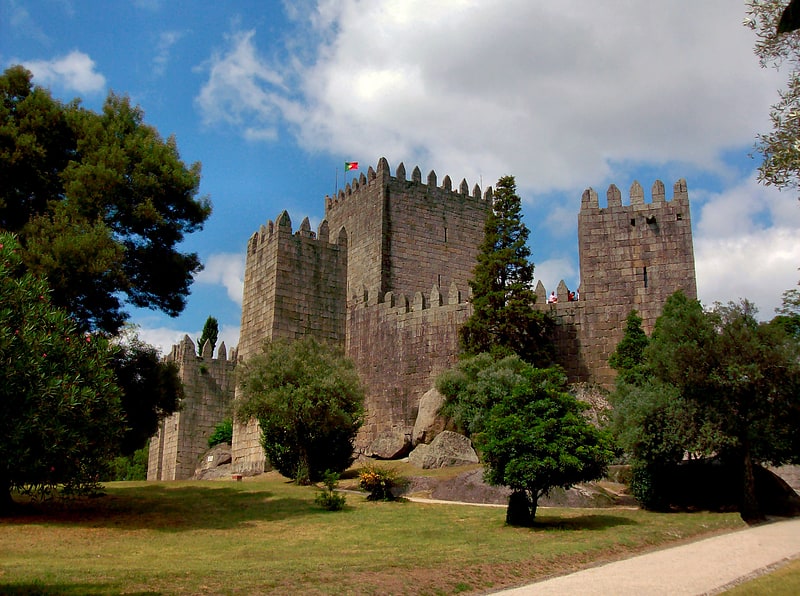
Towering, 11th-century royal fortress. The Castle of Guimarães, is the principal medieval castle in the municipality Guimarães, in the northern region of Portugal. It was built under the orders of Mumadona Dias in the 10th century to defend the monastery from attacks by Moors and Norsemen.
The castle is a military fortification grounded primarily in the late Romanesque period, and elaborated during the early Gothic epoch of Portuguese architecture. Its area is delineated by walls forming a pentagram, similar to a shield, that includes eight rectangular towers, military square and central keep. Originating in the foundations of a Roman structure, from the writings of Alfredo Guimarães, it was later elaborated on the French model, in its current the form of a shield, with reduced central yard and difficult accesses. It includes several Gothic characteristics, owing to its remodelling at the end of the 13th century, when the keep and residences were constructed (possibly over pre-existing structures).[31]
Address: R. Conde Dom Henrique, 4810-245 Guimarães
Church of São Miguel do Castelo, Guimarães

Also known as: Igreja de São Miguel do Castelo
Church in Guimarães, Portugal. The Church of São Miguel do Castelo is a medieval church in the civil parish of Oliveira do Castelo, municipality of Guimarães, in the northern district of Braga of Portugal. The church is emblematically linked to the foundation of the Portuguese Kingdom. Legend suggests that it was the sight of the baptism of the young Afonso Henriques. These claims are contradictory, since the date of the church's founding has been suggested to be during the reign of Afonso II of Portugal.[32]
Address: R. Conde Dom Henrique, 4810-245 Guimarães
Aqueduto da Amoreira, Elvas
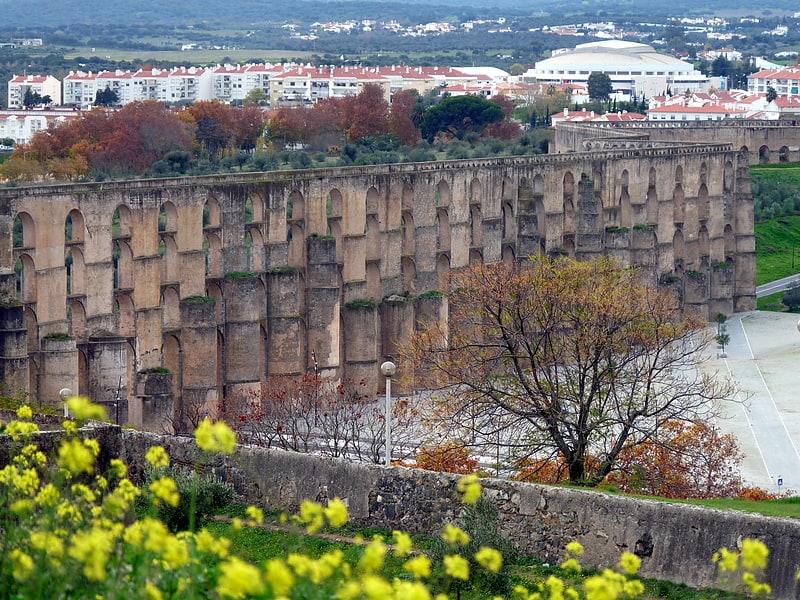
Heritage building in Elvas, Portugal. The Amoreira Aqueduct is a 16th-century aqueduct that spans the Portuguese municipality of Elvas, bringing water into the fortified seat.[33]
Address: 38. 877984, -7. 173838, 7350-953 Elvas
Fort of São Filipe, Setúbal
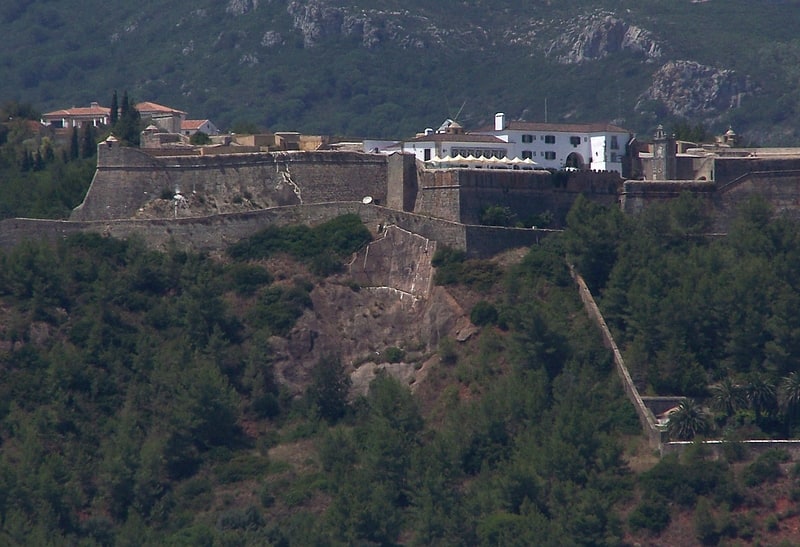
The Fort of São Filipe de Setúbal, also referred to as the São Filipe Castle or the São Filipe Fortress, is in the city of Setúbal in the Setúbal District, of Portugal. The fort was built on the orders of Philip II of Spain, who personally witnessed the laying of the cornerstone of the new fortification in 1582. It stands in a dominant position on the right bank of the mouth of the Sado River, overlooking the centre of Setúbal to its east.[34]
Address: Estrada do Castelo de Sao Filipe, 2900-300 Setubal
Fort of São Miguel Arcanjo, Nazaré
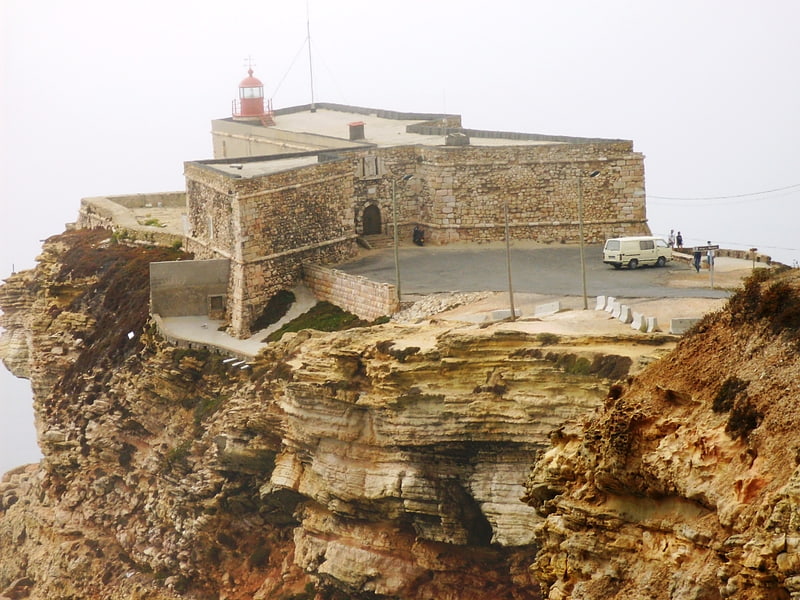
The Fort of São Miguel Arcanjo is situated in Nazaré, Leiria District, Portugal. It was first constructed in 1577 but has undergone remodeling and expansion on several occasions since then. The fort is a popular tourist site, particularly because of its proximity to a surfing area famous for the height of its waves. It now functions as both a lighthouse and a museum, which is devoted in part to surfing.[35]
Address: 39_ 36.250' N, 009_ 5. 083' W, 2450-076 Nazare
Zoomarine Algarve, Albufeira
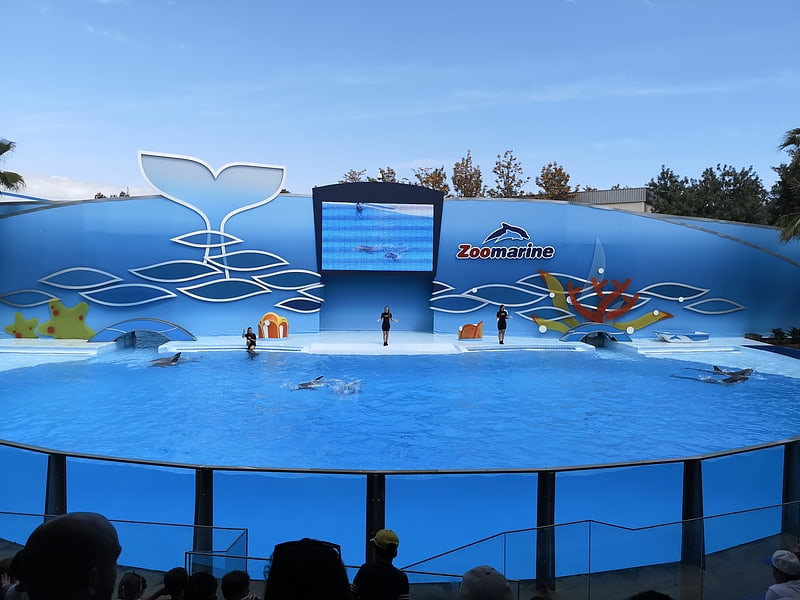
Theme park, Amusement park
Address: Estrada Nacional 125, KM65, 8201-864 Guia
Mercado de Escravos, Lagos
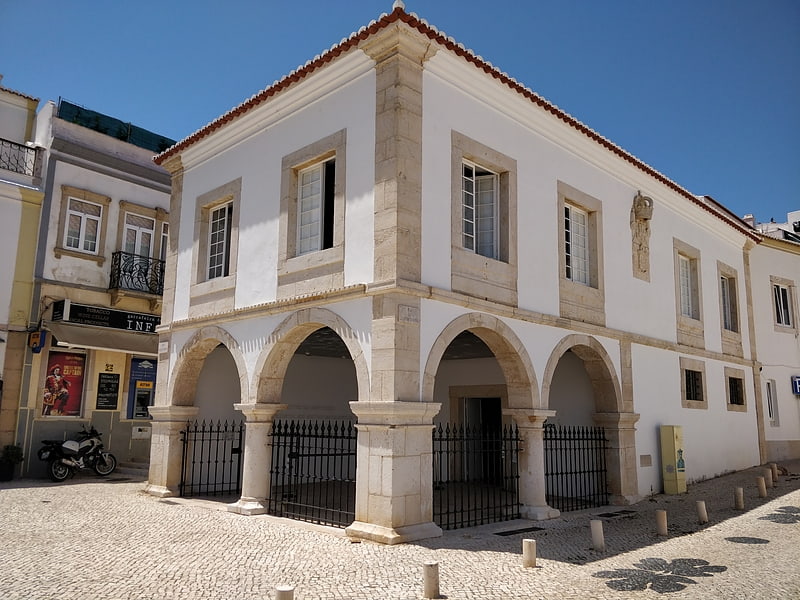
Building. The Mercado de Escravos is a historical building in Lagos, in the Faro District of Portugal. It is located on the site where the first slave market in Europe of the modern era took place, in 1444. The building was first used for military administration and, later, as a customs house. In 2016, the whole building was occupied by a museum dedicated to the story of slavery.[36]
Address: R. da Sra. da Graça 26, Lagos
Faro beach, Faro
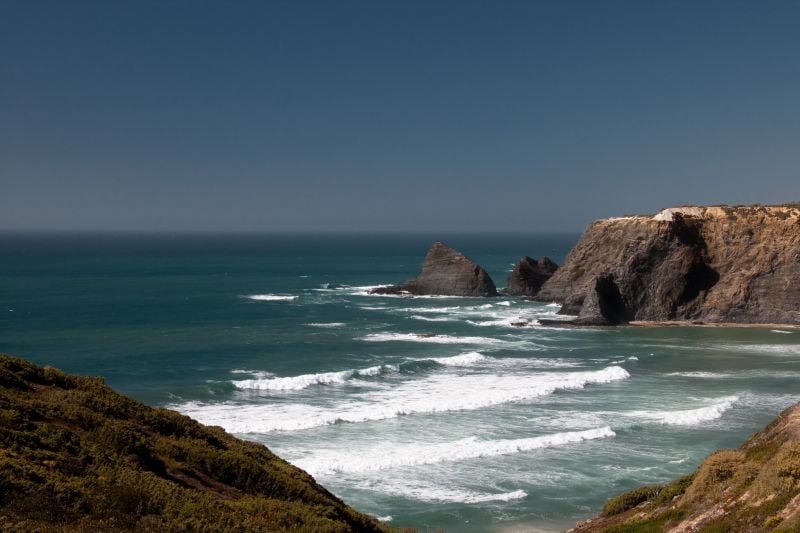
Beach
Basílica da Santíssima Trindade, Fátima

Modern church at the Sanctuary of Fátima. The Basilica of the Holy Trinity is a Roman Catholic church and minor basilica in the Sanctuary of Fátima in Cova da Iria, in the civil parish of Fátima, in the municipality of Ourém in Portugal.
In 2009 it received the Outstanding Structure Award by the International Association for Bridge and Structural Engineering. IABSE awards the most remarkable, innovative, creative or otherwise stimulating structure completed within the last few years.[37]
Address: Cova da Iria - Santuario de Nossa Senhora de Fatima, 2496 Fatima
Casino da Póvoa, Póvoa de Varzim
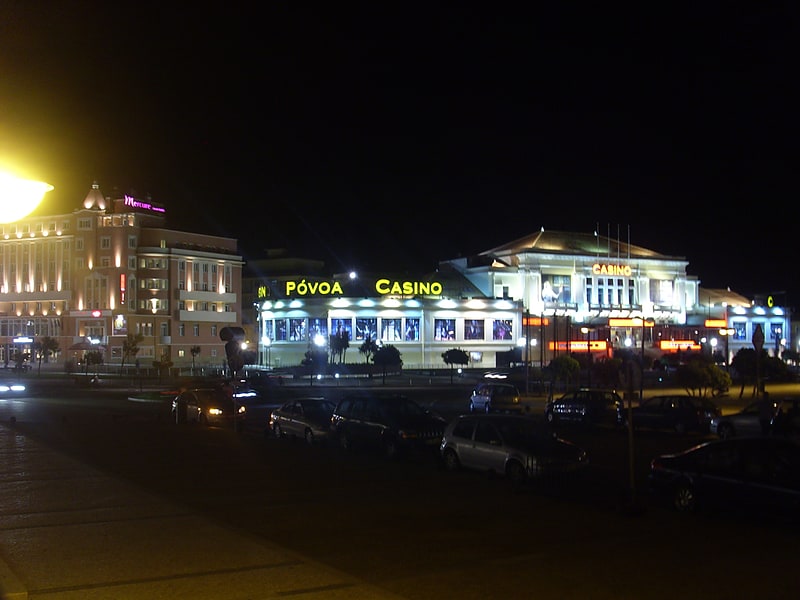
Waterside casino with live entertainment. Casino da Póvoa is a casino located in Póvoa de Varzim in Portugal. It is a gaming and entertainment venue since early 1930s, the building has a Garnier-inspired modernist style and, since 1977, it is listed by IGESPAR, the Portuguese institute of national monuments.
The table games most popular with gamblers are Banca Francesa, Roulette, Blackjack and Baccarat.
The casino has several bars, including a live performances bar, restaurants and a theater. Egoísta Restaurant in the Casino offers haute cuisine of local and Portuguese cuisine presented in a gourmet version, the restaurant is surrounded by an art gallery, exhibiting paintings from some of the finest Portuguese artists such as Graça Morais, Júlio Resende, Nikias Skapinakis or Rogério Ribeiro. It is also a patron of Arts with an art prize for Portuguese artists and a notable literature prize for the Portuguese and Spanish-speaking writers from the Iberian Peninsula, Latin America and Portuguese-speaking Africa.[38]
Address: Passeio Alegre, 4490-428 Povoa de Varzim
Pego do Inferno, Tavira
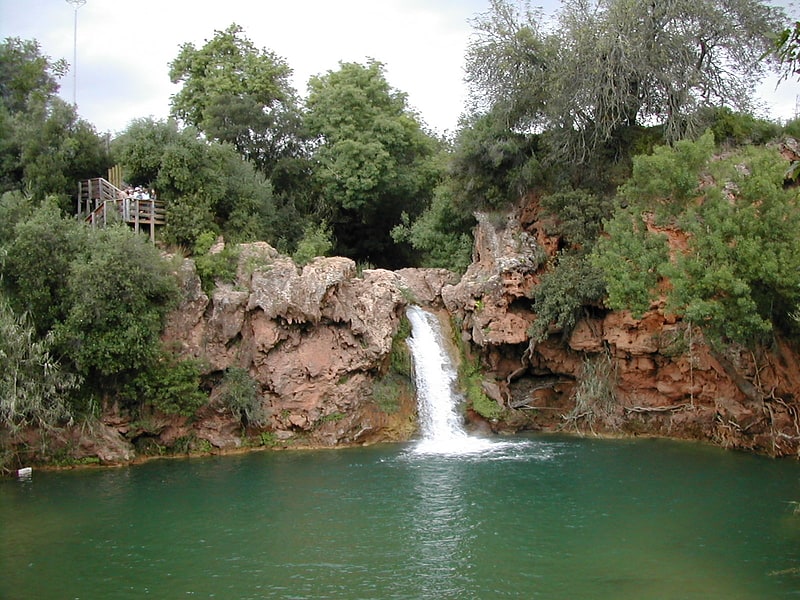
Waterfall in Portugal. Pego do Inferno is a small waterfall and lake located in the parish of Santo Estêvão, in Tavira in the Algarve, Portugal. It is one of the three waterfalls formed by Asseca stream.[39]
Address: Estr. EN514-2, 8800 Santo Estevao
Castle of Lagos, Lagos

Also known as: Castelo de Lagos
Castle in Lagos, Portugal. The Castle of Lagos is a medieval castle located in the municipality of Lagos, Portugal. Its walls surrounded the entire city of Lagos, providing the town its main means of defence.[40]
Address: Jardim da Constituicao, 8600 Lagos
Fort of São João Baptista, Peniche
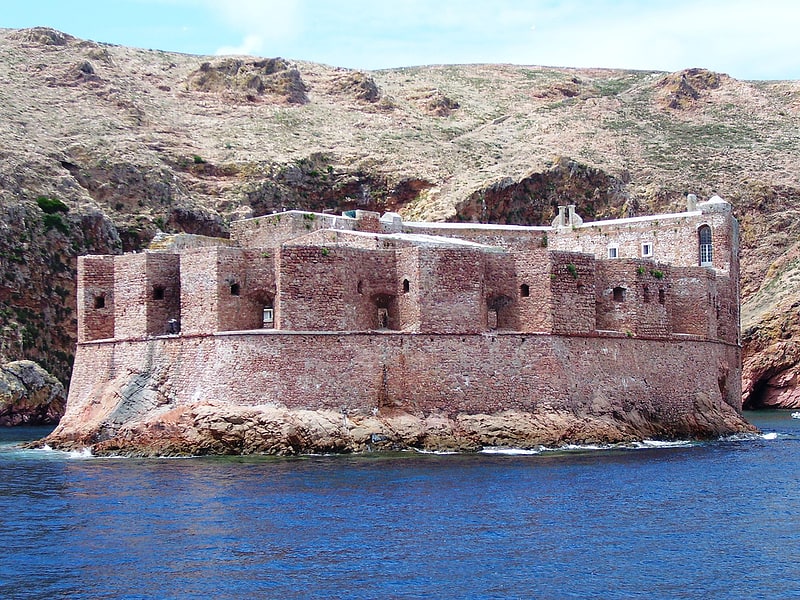
Also known as: Forte de São João Baptista das Berlengas
Fortress in Peniche, Portugal. The Fort of São João Baptista das Berlengas, or simply known as the Fort of the Berlengas, is located off western coast of Portugal, on the largest island of the archipelago of the Berlengas, in the municipality of Peniche in Oeste region. The fortification belonged to a group of defensive military structures meant to protect the municipality located on the coast.[41]
Forte da Graça, Elvas
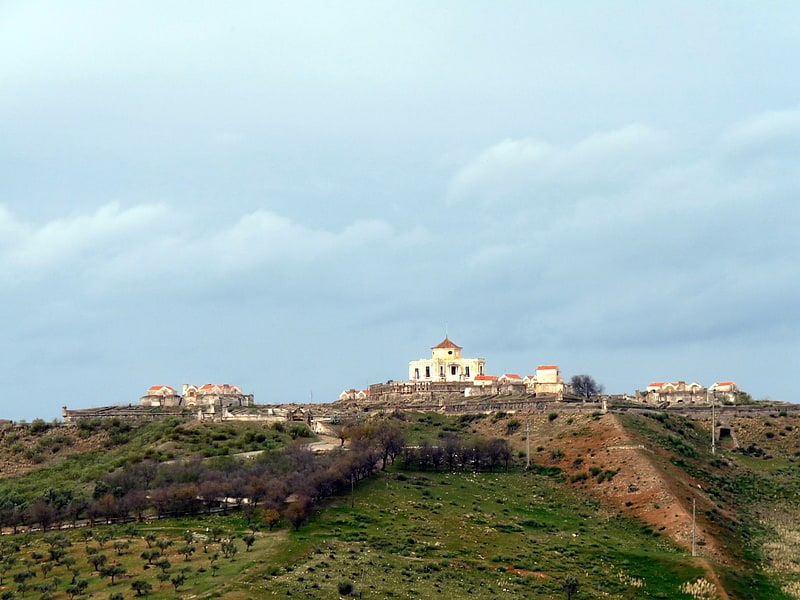
Also known as: Forte de Nossa Senhora da Graça
Fortress in Elvas, Portugal. The Nossa Senhora da Graça Fort, officially Conde de Lippe Fort and known historically as La Lippe, is a fort in the village of Alcáçova, about 1 kilometre north of the town of Elvas in the Portalegre District of Portugal.
It stands in a dominant position on the Monte da Graça (Hill of Grace) and forms part of the Garrison Border Town of Elvas and its Fortifications, which on 30 June 2012 was classified as a UNESCO World Heritage Site.
In 2014, the fort became part of a new project under the aegis of the Portuguese Ministry of National Defense, with the support of Turismo de Portugal (Portuguese Tourism), which features historical itineraries based on Portuguese heroes.[42]
Address: Forte da Graça - Elvas, Elvas
Castelo de Elvas, Elvas

Castle in Elvas, Portugal. The Castle of Elvas is a medieval military fortification in Portugal, in the civil parish of Alcáçova, municipality of Elvas, part of a first line of defense in the Portuguese Alentejo, in conjunction with the military forts of Ouguela, Campo Maior, Olivença and Juromenha.[43]
Address: Parada do Castelo, Elvas
Santuário de Nossa Senhora da Nazaré, Nazaré
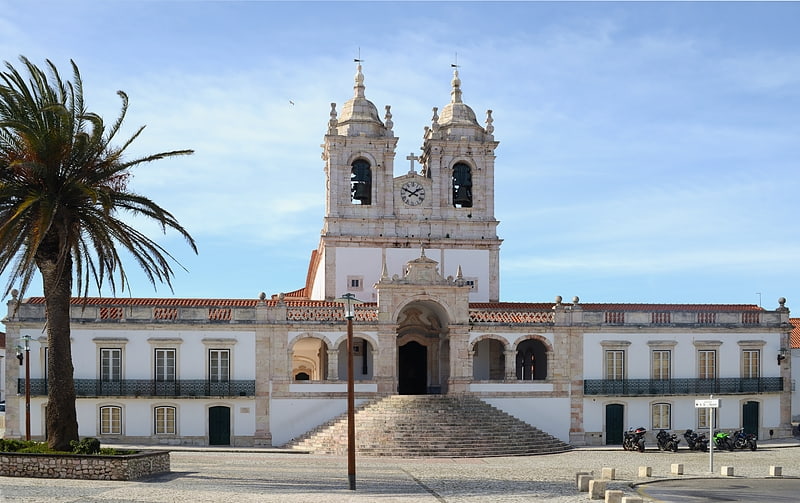
Church in Nazaré, Portugal. The Sanctuary of Our Lady of Nazaré is an imposing Marian shrine that memorializes an ancient miracle occurred under the intercession of the Virgin Mary. It is located on the hilltop called O Sítio, overlooking Nazaré, in Portugal, and was founded in the 14th century.[44]
Address: Estr. do Farol, 2450-065 Nazaré
Cabo Carvoeiro, Peniche

Lighthouse in Peniche, Portugal. The Lighthouse of Cabo Carvoeiro is an active lighthouse in the civil parish of Peniche, municipality of the same name, in the Portuguese district of Leiria.[45]
Address: Rua Ilha de Peniche, 2520-618 Peniche
Fortress of São João Baptista, Angra do Heroísmo
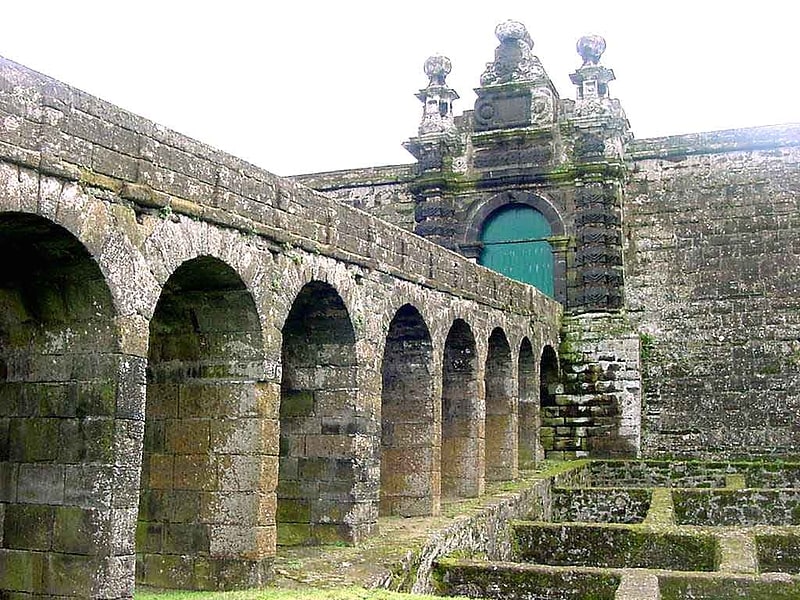
Also known as: Fortaleza de São João Baptista da Ilha Terceira
Military base in Angra do Heroísmo, Portugal. The Fortress of São João Baptista, also known as the Fort of São Filipe or Fort of Monte Brasil is a historic fortress and defensive emplacement, located in the civil parish of Sé, municipality of Angra do Heroísmo in the Portuguese island of Terceira, archipelago of the Azores.[46]
Address: Monte Brasil, 9700 Angra do Heroísmo
Cividade de Terroso, Póvoa de Varzim
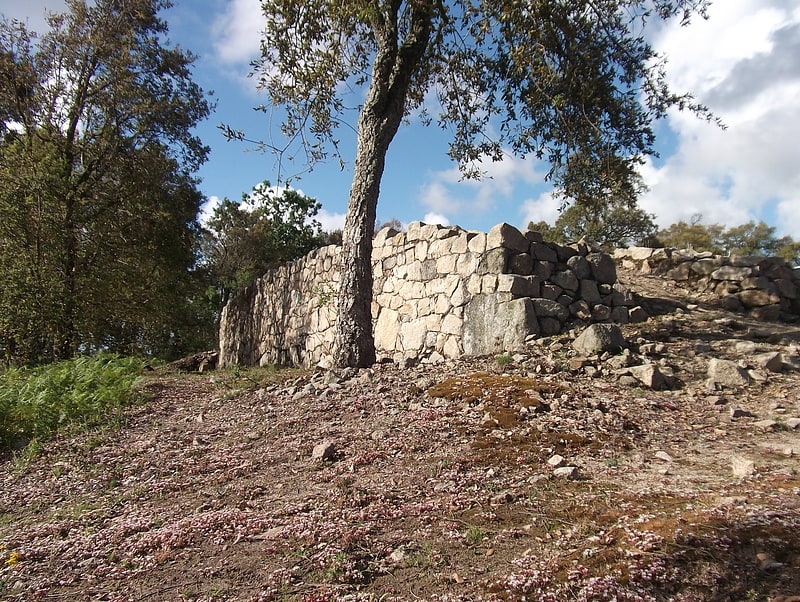
Archaeological museum in Terroso, Portugal. Cividade de Terroso was an ancient city of the Castro culture in North-western coast of the Iberian Peninsula, situated near the present bed of the Ave river, in the suburbs of present-day Póvoa de Varzim, Portugal.
Located in the heart of the Castro region, the cividade played a leading role in the early urbanization of the region in the early 1st millennium BC, as one of the oldest, largest and impregnable castro settlements. It was important in coastal trading as it was part of well-established maritime trade routes with the Mediterranean. Celtic and later Carthaginian influence are well-known, it was eventually destroyed after the Roman conquest in 138 BC. The city's name in antiquity is not known with certainty but it was known during the Middle Ages as Civitas Teroso (The City of Terroso). it was built at the summit of Cividade Hill, in the suburban area of Terroso, less than 5 km from the coast, near the eastern edge of modern Póvoa de Varzim.
Beyond the main citadel, three of Cividade de Terroso's outposts are known: Castro de Laundos (the citadel's surveillance post), Castro de Navais (away from the citadel, a fountain remains to this day), and Castro de Argivai (a Castro culture farmhouse in the coastal plain). Cividade de Terroso is located just 6,3 km from Cividade de Bagunte both in the North bank of the Ave river.[47]